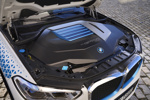Manufacturers are continually striving to improve the performance and styling of their models and aluminium body panels are becoming a common alternative to steel. As aluminium is lighter, it provides the obvious benefits of fuel savings and therefore benefits to the environment.
However, one motor claims group is warning decision-makers to expect increases in insurance premiums, as aluminium becomes a more favoured product in vehicle manufacture – a claim which is dismissed by the car makers involved.
The aluminium used in new models from Audi, BMW, Citroen, Honda, Jaguar, Peugeot and Renault is increasing repair costs by at least 25%, and sometimes much higher, according to motor insurance claims specialist WNS Assistance.
These extra costs are likely to lead to significant increases in premiums once insurers have factored them fully into their calculations, says Tim Rankin, managing director of WNS Assistance, which handles 250,000 motor insurance claims a year on behalf of large commercial fleets, insurers, and broker groups.
Accident-damaged aluminium-bodied vehicles could also be off the road much longer than steel-bodied vehicles as a result of unique difficulties involved in their repair, says Rankin.
Models that use aluminium include the Audi A2, A6 and A8, the BMW 5 and 6-series, the Citroen C5 and C8, the Jaguar XJ, the Peugeot 407, and the Renault Espace.
The level of aluminium varies from intensive, where most of the vehicle is constructed from the lightweight metal, as in the Audi A2 and A8 and Jaguar XJ models, to aluminium used exclusively for the roof, bonnet or front wings, as in the BMW 5-series, Citroen and Peugeot models, where a small weight reduction or shift in weight balance is required.
Other models largely or at least partly constructed from aluminium are expected to follow suit as motor manufacturers looking to minimise exhaust emissions in response to government pressures to develop lighter, more fuel-efficient cars, despite the extra weight necessary for the increasing number of required safety systems. But manufacturers have dismissed claims that aluminium will have a significant effect on fleet costs.
A spokesman from Audi UK said: ‘During the past 10 years of producing aluminium cars an increase in repair costs has not been the case. It is nervousness and anticipation more than reality.
‘In fact, smaller parking knocks and dents are easier to repair than steel as the material is easier to manipulate.’
It is the environmental benefits of aluminium that are spurring more manufacturers to use it in vehicle production.
The Audi spokesman, said: ‘Aluminium is lighter, completely 100% recyclable and in the long term is more ecological.
‘The benefits of using it are in fuel economy and fuel performance. If a car is lighter it will use less fuel.’
Launched in 1994, the Audi A8 was the world’s first aluminium production car, constructed using the lightweight Audi Space Frame (ASF), and the results of 16 years of research.
A second model using the ASF and aluminium body panels is the A2. It is 40% lighter than it would be using steel.
However, Rankin claims that the number of repairers able to deal with aluminium in cars is very limited compared to the number of vehicles involved.
He says that in some cases, there are only a handful of suitable garages in the entire country who can repair a particular make and model.
This means that any aluminium-bodied vehicle involved in an accident needs to be repaired in a franchised dealership or repairer which has invested in the specialised equipment and training required for the repair.
Rankin claims the labour rate in such dealerships is typically at least 25% more than it is at a bodyshop within an insurance industry network. Aluminium panels and processes also cost significantly more than steel equivalents.
This extra cost is currently being borne by insurers, unless the fleet is self-insured, when it could push any vehicle repair fund into the red. But once insurers have been involved in a number of aluminium repairs and realise the degree of extra expense involved, they are likely to increase their premiums accordingly.
Rankin said: ‘Insurers and claims management companies have long had their own contracted networks of repairers.
‘These offer very competitive labour rates, well below that of franchised dealerships or specialist repairers. In turn, this keeps the insurance premium or the amount that comes out of a repair fund down to a minimum.
‘However, aluminium-bodied cars need a separate repair bay from those for steel-bodied vehicles because airborne particles can cause corrosion in the aluminium. These are expensive to install.
‘Repairing aluminium cars also involves new skills and training to master the different methods required. The upshot of all this is that relevant repair facilities are few and far between and this relationship of supply to demand is having a deleterious effect on the cost of repair.’
However, car manufacturer Jaguar claims some aluminium parts can actually be more cost-effective to repair.
A Jaguar spokesman said: ‘The cost of repair, as with any car, will depend on the crash. We have a bolt-on front end made from aluminium which sits around the front bumper area.
‘We have found that on small low speed bumps the repair ability, time and costs have actually improved as a result of using aluminium.
‘Performance and economy are improved on aluminium cars and the manufacturing process is also improved. Aluminium is stiffer so it provides benefits on the handling of the car making it easier to work with the suspension and gearing.’
Are you driving aluminium?
Audi A8: bodyshell and some mechanical components
Jaguar XJ: Entire bodyshell excluding bumpers
BMW 5-series: Front structure from A-pillar, rear suspension and other mechanical components
Citroen C5: Bonnet, door sills and other mechanical components















Login to comment
Comments
No comments have been made yet.